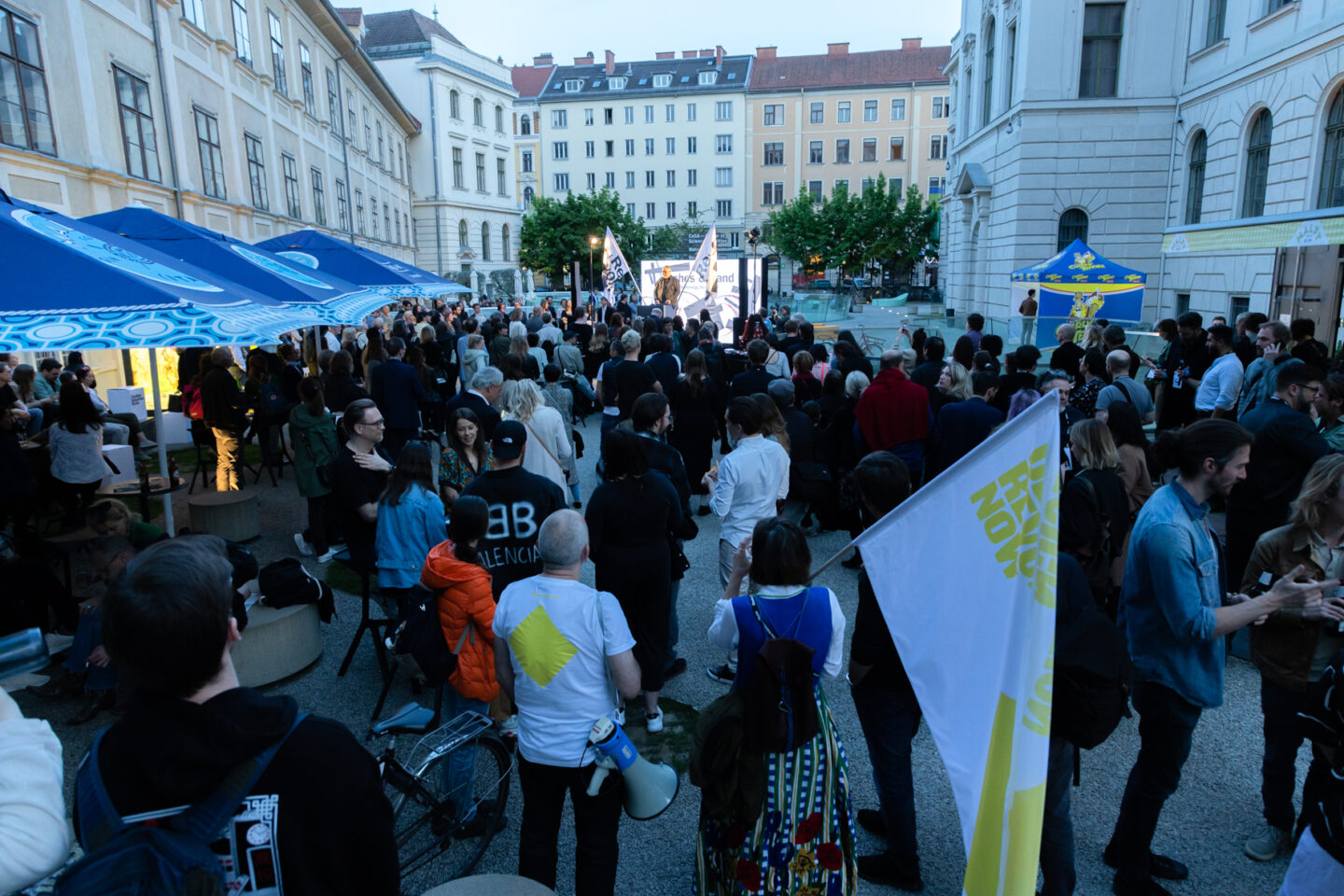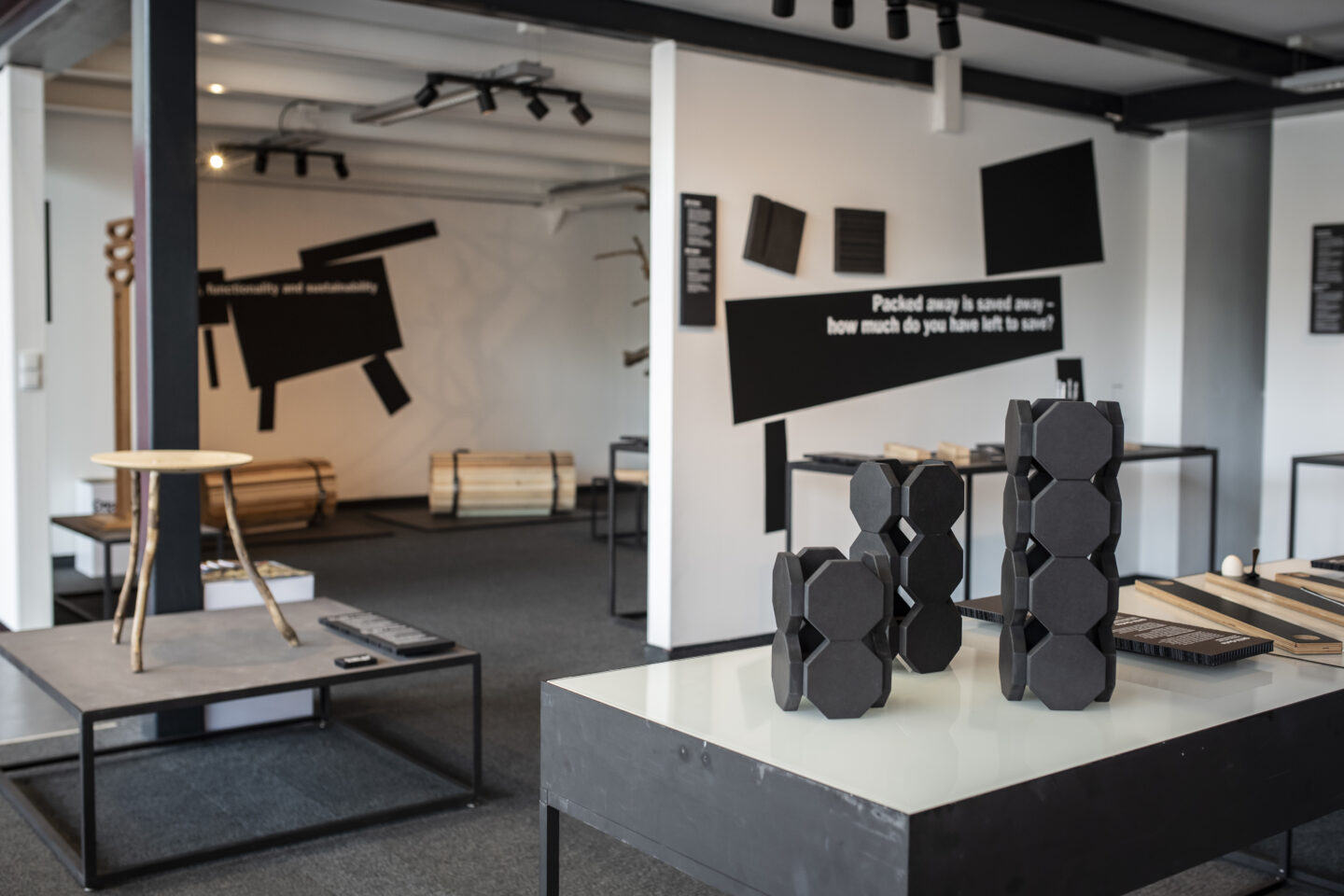
What constitutes the value of design? Answering this question is one of the core tasks of Creative Industries Styria, the creative industries network for the Austrian province of Styria. With numerous initiatives, CIS has been trying since 2007 to raise awareness of the topic of design and the added value that designers can bring to the economy among companies and ultimately the population. Every year in May, the major event Design Month Graz takes place. In 2023, the event in the Styrian capital has the provocative title “Revolution”. However, this does not mean the violent deposing of those in power, but is intended as a call to react more quickly to the pressing problems of the present. “It is to be understood in the sense of an upheaval, a change. In this context, there are a multitude of revolutions. For example, in the field of artificial intelligence or in the world of work, where everything is changing. There is a green revolution, a digital revolution anyway. But as far as climate targets and the associated social changes are concerned, things are actually moving far too slowly. That means revolutions will be needed,” Eberhard Schrempf, CIS Managing Director, explains the background.
For Schrempf, it is clear that the creative community can play an important role with regard to the current challenges, because “we don’t mean glossy design for elites here, but design that determines our everyday lives. This is about communication, culture and how we shape our lives. And in a way that has a positive impact on people and the environment,” says Schrempf. The self-image of many designers, especially young ones, has changed in this regard, he says. “Designers who have completed their training or are still in training no longer see themselves as service providers for the industry, but as sparring partners who have a say in why something is done the way it is and how much of a footprint is left behind.

Bringing design into society
In addition to the challenging main theme of profound change, which was underpinned with so-called revolutionary speeches during the opening evening on May 5 and continued with a symposium on the following day, the CIS sees its most urgent tasks as bringing design into society, breaking down threshold fears, establishing contacts and facilitating access. One program item that does this in a rather unique way is the Design Clinic, a drop-in center for design emergencies. This humorous approach, which crossed the Graz stage for the first time last year, has been further developed for 2023. “After last year’s success, we want to dock a special clinic in the field of digitalization. That is, this year the Digital Clinic opens, where we again want to lower the threshold and make it clear that design creators do not stand on a high pedestal, wait there until they are called and then float down, but they are part of the ecosystem we all live in. We must succeed in making it clear that design is something that determines our everyday lives, and massively so. Everything is designed, the only question remains, is it well designed or badly designed. And unfortunately, there is more bad design than good design,” Schrempf complains.


Design in the City
Design Month Graz offers a mix of information, exhibitions and festival. One initiative in particular that breaks down barriers is “Design in the City”. National and international designers present their works in design-oriented stores. Both companies benefit from this, because people come to the store quite casually, and the creative people, because their pieces are embedded in an environment that now has the highest level of acceptance among the local population as well as charisma beyond the Styrian state border. “Shops interested in design approach us and want to participate. And we then say, for example, we have Martin Mostböck here, who has created a champagne cooler that fits perfectly into Kastner & Öhler’s champagne bar. Then there’s a meet and greet with the designer and so on. That brings audiences into the stores that might not otherwise go in. It lowers the threshold. And we also offer guided tours: On Fridays and Saturdays there are Guided Tours,” Schrempf advertises. In the assembly showroom of Karin Zinganel-Wintscher and Susanna Ahvonen, pieces by Spanish fashion designer Eder Aurre are on display, French designer Guillaume Crédoz presents his Minuscule lamps in the Geba carpet gallery, and the award-winning R9 TASK LAMP by Florian Blamberger can be seen at digitalis. These are just a few examples of the 30 participating stores and cooperations in Graz.
„It is an umbrella that we put up.“
– Eberhard Schrempf
Designcountry Styria
There are 4,800 creative industries companies in Styria. Around 17,500 people work in this industry. “The creative industry in Styria is strong. The share is 10%. That is a similar value to that in Central Europe as a whole. There are many more service providers than direct marketers. This has to do with the really good order situation. Especially in industrial and product design, but also in service design and consulting. Whereas Styria has many mobility and green tech companies that invest a lot in research and development and also understand how important it is for design expertise to be involved at an early stage of product development or change processes,” explains Schrempf.


Create awareness for design
The CIS network promotes and supports the creative industries and has achieved quite a bit since 2007 in terms of acceptance and attention for design in society: “It certainly hasn’t happened on the scale we would like. We’ve created maybe a 10-15% better or broader understanding, but not the very big step. It’s a slow process, I’ve come to understand that. That’s why we stepped up our efforts some time ago to reach out more directly to the public – just in Design Month. Of course, we are primarily there for the creative industry, for our members, where we try to strengthen the bridges into the corporate landscape so that designers are commissioned locally and not a design agency in London or Hamburg,” says Schrempf, concretizing the thrust of CIS. Back to the initial question What constitutes the value of design? Here are some answers: Designers make sure that things work well, that services are offered in a user-friendly way, or that new brands have a strong presence. But they can do more. In the fields of strategic design and social design, they are actively working to make the world a better place. Last but not least – and here we are back to aesthetics – they make our lives more beautiful.

Text & Interview: Markus Schraml/Formfaktor











